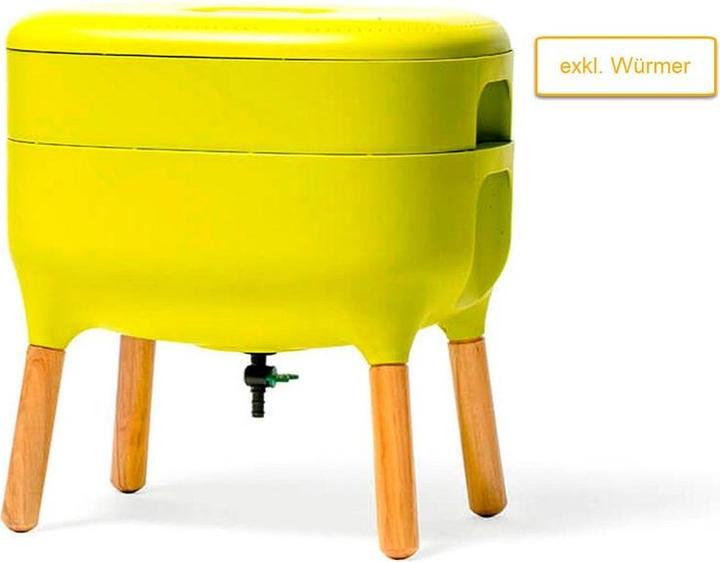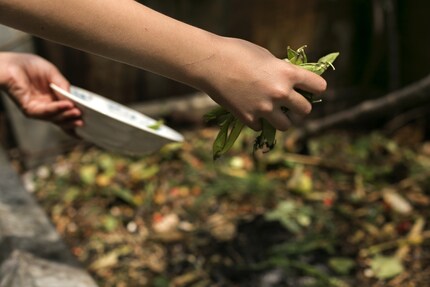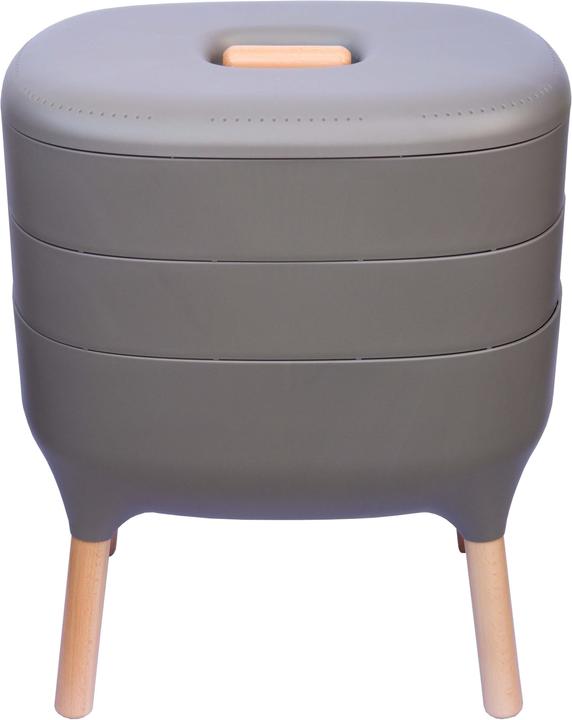

A bunch of gardeners' luck
Even city dwellers can reuse their organic waste. Composting is no longer the preserve of garden owners. If you do it right, you will hardly smell a thing and soon have nutrient-rich humus in your hands.
Composting is a religion in itself. The compost heap is worshipped like a god, new sacrifices are constantly being made in the form of kitchen waste and there are no alternatives anyway. Okay, maybe I've just met some very serious composting friends. Quite possibly. Be that as it may, compost really is a good thing. You get rid of your kitchen waste and at the same time your plants thrive. Win-win! Many amateur gardeners swear by the system. But what if you don't have a garden? Counter question: Do you have a balcony? Then you too can give your kitchen waste an afterlife. Find out exactly how here. Spoiler: It's not witchcraft!
Black gold
During composting, organic material is broken down by oxygen and soil organisms. At the very end of the process, humus is created, which in turn can be fed to your plants. Using compost not only promotes the growth of your plants, but also improves the soil structure in the long term. But not all waste can be turned into black gold. Meat and fish, cooked food and diseased plant parts belong in the organic waste bin. You also need to be careful with tropical fruit. Although they decompose just as well as local fruit, they are sometimes heavily treated with pesticides in the countries of origin. So better in bulk (moderation) than in masses.
More does not always help more
Once the organic pile has turned into humus, it's time to spread it out. But don't let yourself be tempted, hold back a little. Too much humus will overwhelm your green favourites. Over-fertilisation is the result. One to two litres of compost per square metre spread over the year is perfectly sufficient. But I'm getting ahead of myself. We are still a long way from the humus stage. We need to go back about 12 months to the start of your composting experience. Once you have found a sheltered, shady spot for the compost on your balcony, you can start filling it. Composting on your balcony works in almost the same way as in the garden. The only difference is the substrate. In contrast to the garden, there is rarely grass and soil on the balcony, but rather stone slabs.

Shift work
Get a plastic or wooden container, make a few holes in the bottom and place it slightly raised (for example on two square timbers) in a corner of the balcony. A capacity of 70 to 100 litres is sufficient for a proper composting process. You should line the bottom layer with a few twigs to keep it airy from below. You can then throw your kitchen waste on top. Cut your waste as small as possible as this will speed up the process. You shouldn't have much work afterwards. You just need to make sure that the compost is neither too moist nor too dry. If it is too wet, add more dry waste or leaves. If it is too dry, add more moist waste or water. If the compost heap has the right level of moisture, it should hardly stink, just smell a little mouldy. It also makes sense to mix the heap every now and then. You can do this for about a year, after which you should have ready-to-use humus. There is a certain "cress test" that tells you whether your compost is actually ready. Simply add some cress seeds to the compost and wait three to four days. If the cress sprouts, then your compost is perfect.
Worms do the work for you
Alternatively, you can put a worm composter on your balcony. As your balcony is unlikely to have an earthy substrate, worms and other creatures cannot automatically crawl into your waste from below. The worms are therefore added by hand. A worm composter usually consists of several levels, which are worked on by the worms one after the other. But be careful, the worms are vegetarians, they only like vegetable waste. And as worms feel most comfortable between 12 and 27 degrees Celsius, the composter must be kept in the cellar in winter. However, the process remains the same: kitchen waste + time = humus. The only difference is that the "time" variable is smaller in this variant than in classic compost. The worms step on the gas and decompose your waste within a few months. You can even harvest worm tea after just two months. You can use this liquid compost product as fertiliser for herbs and houseplants.
The worms themselves are not included, you can get them from your trusted worm dealer. There are worms specially bred for composting that reproduce quickly and are very hungry. Normal earthworms that you collect outside are less suitable for worm compost.
My life in a nutshell? On a quest to broaden my horizon. I love discovering and learning new skills and I see a chance to experience something new in everything – be it travelling, reading, cooking, movies or DIY.
Practical solutions for everyday problems with technology, household hacks and much more.
Show all